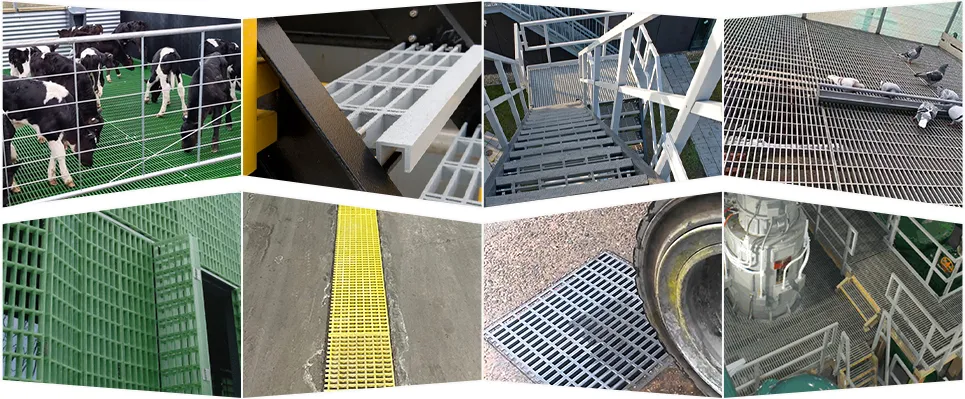loading...
- No. 9, Xingyuan South Street, Dongwaihuan Road, Zaoqiang County, Hengshui, Hebei, China
- admin@zjcomposites.com
- +86 15097380338
- Welcome to visit our website!
reinforced concrete with frp bars mechanics and design
Reinforced Concrete with FRP Bars Mechanics and Design Insights
Reinforced concrete has long been the material of choice for modern construction due to its high compressive strength, durability, and versatility. Traditionally, steel reinforcement bars (rebar) have been used to enhance the tensile strength of concrete structures. However, the advent of Fiber-Reinforced Polymer (FRP) bars has introduced a significant evolution in the design and mechanics of reinforced concrete. This article explores the mechanics behind FRP bars and their implications for design.
FRP bars are composed of polymer resin combined with fiber materials, such as glass, carbon, or aramid. These materials offer several advantageous properties, including high strength-to-weight ratios, resistance to corrosion, and minimal thermal expansion. One of the most critical mechanics associated with FRP bars is their ability to withstand environmental degradation, particularly in harsh environments where traditional steel can suffer from corrosion. This characteristic is especially beneficial for structures exposed to moisture, chemicals, or salts, such as bridges and marine structures.
In terms of design, the incorporation of FRP bars alters the traditional approach to reinforced concrete engineering. The modulus of elasticity of FRP materials is lower than that of steel, which means that the deflection behavior of concrete elements reinforced with FRP must be carefully considered. Engineers must account for the potential for increased deflections under service loads, necessitating adjustments in the design to ensure safety and serviceability.
reinforced concrete with frp bars mechanics and design

Moreover, the tensile strength of FRP bars is significantly higher than that of conventional steel. This strength allows for the use of smaller diameter bars or fewer bars overall, leading to reductions in congestion and ease of placement during construction. However, this increased tensile capacity also means that careful attention must be paid to the anchorage and bond between the FRP bar and concrete, as the bond strength can be different from that of steel. Designers must ensure that sufficient bond length is provided to prevent slippage and ensure the effective transfer of forces.
Another important design consideration is related to the behavior of FRP bars under fire. Unlike steel, which has a well-documented reduction in strength at elevated temperatures, FRP materials can experience significant degradation when exposed to fire, leading to a loss of structural integrity. Therefore, fire-resistant design strategies, such as protective coatings or additional concrete cover, must be integrated into the design process.
In conclusion, the use of FRP bars in reinforced concrete offers significant benefits, particularly in terms of durability and weight savings. However, engineers and designers must thoroughly understand the unique mechanical properties of these materials and adapt their design methodologies accordingly. By addressing issues such as bond strength, deflection behavior, and fire resistance, the construction industry can harness the full potential of FRP-reinforced concrete, paving the way for innovative and resilient structures in the future.
-
The Rise of FRP Profiles: Strong, Lightweight, and Built to LastNewsJul.14,2025
-
SMC Panel Tanks: A Modern Water Storage Solution for All EnvironmentsNewsJul.14,2025
-
GRP Grating: A Modern Solution for Safe and Durable Access SystemsNewsJul.14,2025
-
Galvanized Steel Water Tanks: Durable, Reliable, and Ready for UseNewsJul.14,2025
-
FRP Mini Mesh Grating: The Safer, Smarter Flooring SolutionNewsJul.14,2025
-
Exploring FRP Vessels: Durable Solutions for Modern Fluid HandlingNewsJul.14,2025
-
GRP Structures: The Future of Lightweight, High-Performance EngineeringNewsJun.20,2025
